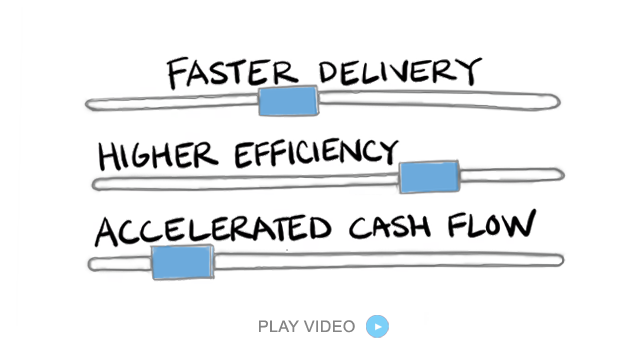The Flow Production Method: Enhancing Efficiency
In the industrial manufacturing environment, production schedulers face the challenge of optimizing workflows, reducing costs, and meeting fluctuating demand—all while ensuring high-quality output. One methodology that stands out for its ability to streamline operations is the Flow Production Method.
By combining this method with advanced scheduling tools like PlanetTogether and seamlessly integrating it with enterprise systems such as SAP, Oracle, Microsoft, Kinaxis, or Aveva, industrial manufacturers can unlock unprecedented efficiency and agility.

Understanding the Flow Production Method
Flow production, also known as continuous production, is a manufacturing methodology that focuses on the steady, uninterrupted movement of materials through the production process. Unlike batch or job production, where products are made in specific quantities or customized orders, flow production emphasizes creating a streamlined process for producing large volumes of standardized products.
Key characteristics of the Flow Production Method include:
Standardization: Products are uniform and follow a consistent process.
Minimized WIP (Work in Progress): Materials move seamlessly from one stage to the next without bottlenecks.
High Automation: Automated systems ensure consistent quality and efficiency.
Reduced Cycle Times: Faster production cycles result in quicker order fulfillment.
For production schedulers, adopting the flow method means designing and maintaining a production schedule that minimizes downtime and ensures a continuous flow of resources.

Challenges in Implementing Flow Production
While flow production offers many benefits, its implementation is not without challenges:
Resource Coordination: Ensuring that materials, labor, and machinery are available precisely when needed.
Downtime Management: Addressing equipment breakdowns or maintenance without disrupting the flow.
Demand Variability: Adapting production schedules to shifts in customer demand.
System Integration: Aligning flow production with enterprise resource planning (ERP) systems for real-time data synchronization.
This is where tools like PlanetTogether Advanced Planning and Scheduling (APS) and robust ERP systems such as SAP, Oracle, Microsoft, Kinaxis, and Aveva come into play.
![]()

How PlanetTogether Enhances Flow Production
PlanetTogether APS is a powerful solution designed to optimize production scheduling and planning. By integrating it with your ERP system, production schedulers can achieve real-time visibility, predictive insights, and enhanced collaboration across departments.
Key Features of PlanetTogether for Flow Production
Dynamic Scheduling: PlanetTogether dynamically adjusts schedules based on real-time data, ensuring minimal disruptions to the production flow.
Bottleneck Identification: Advanced analytics pinpoint areas where delays are likely, allowing schedulers to take proactive measures.
Scenario Planning: Test various production scenarios to determine the most efficient schedule under different conditions.
Real-Time Collaboration: Teams can access synchronized schedules and communicate changes instantly, reducing delays and errors.

Integrating PlanetTogether with Leading ERP Systems
To fully realize the benefits of the Flow Production Method, integration between PlanetTogether and your ERP system is essential. This integration bridges the gap between planning and execution, enabling seamless communication across the supply chain.
SAP Integration
SAP, a leader in ERP solutions, provides robust capabilities for managing production resources, inventory, and demand forecasting. When integrated with PlanetTogether:
Schedulers gain real-time inventory visibility, ensuring materials are available for continuous flow.
Automated data exchange eliminates manual updates, reducing errors and saving time.
Integration facilitates precise capacity planning, aligning production schedules with equipment availability.
Oracle Integration
Oracle’s ERP solutions are renowned for their advanced analytics and scalability. With PlanetTogether:
Production schedules can be directly linked to Oracle’s demand forecasting tools, ensuring alignment with market trends.
Oracle’s IoT-enabled devices provide real-time machine performance data, which PlanetTogether uses to adjust schedules dynamically.
The integration enables a unified view of production and supply chain metrics, aiding long-term strategic planning.
Microsoft Dynamics Integration
For manufacturers using Microsoft Dynamics, PlanetTogether adds value by:
Synchronizing production schedules with Microsoft’s project management tools for enhanced visibility.
Leveraging Microsoft’s Power BI dashboards to provide actionable insights into production performance.
Streamlining communication between production and procurement teams through shared data systems.
Kinaxis Integration
Kinaxis specializes in rapid-response supply chain planning. When paired with PlanetTogether:
Schedulers can access real-time supply chain data, ensuring production aligns with material availability.
Advanced predictive capabilities help mitigate disruptions by identifying potential supply chain issues before they impact production.
The integration facilitates end-to-end visibility, connecting production floors with global supply chain networks.
Aveva Integration
Aveva’s focus on industrial automation and IoT makes it an ideal partner for PlanetTogether in flow production environments:
Aveva’s IoT platforms feed real-time machine performance data into PlanetTogether, enabling predictive maintenance scheduling.
The integration supports digital twins, allowing schedulers to simulate and optimize production processes virtually.
Enhanced collaboration tools ensure production teams are aligned with maintenance and quality assurance.

Benefits of Integrating PlanetTogether with ERP for Flow Production
Combining PlanetTogether APS with ERP systems provides production schedulers with several critical advantages:
Enhanced Efficiency: Automated scheduling reduces manual effort and minimizes delays.
Improved Accuracy: Real-time data synchronization eliminates errors in inventory management and production planning.
Flexibility: Schedulers can quickly adapt to changes in demand or production capacity.
Cost Savings: Optimized schedules reduce waste, improve resource utilization, and lower operational costs.
Sustainability: Streamlined processes minimize energy consumption and material waste, contributing to sustainability goals.
Best Practices for Production Schedulers
To maximize the benefits of the Flow Production Method and integrated systems, production schedulers should:
Standardize Processes: Ensure workflows are consistent and repeatable.
Monitor Key Metrics: Track cycle times, WIP levels, and machine utilization rates.
Leverage Analytics: Use predictive analytics to anticipate disruptions and optimize schedules.
Foster Collaboration: Encourage communication between production, procurement, and maintenance teams.
Invest in Training: Equip teams with the skills to use advanced tools like PlanetTogether effectively.
The Flow Production Method offers industrial manufacturers a proven approach to achieving operational excellence. By integrating advanced scheduling tools like PlanetTogether with ERP systems such as SAP, Oracle, Microsoft, Kinaxis, or Aveva, production schedulers can transform their workflows into efficient, agile, and cost-effective processes.
In an era where every second counts, adopting flow production and leveraging the power of integrated systems can set your facility apart from the competition. With the right tools and strategies, production schedulers can ensure their manufacturing operations flow smoothly—delivering quality products on time, every time.
Are you ready to take your manufacturing operations to the next level? Contact us today to learn more about how PlanetTogether can help you achieve your goals and drive success in your industry.
Topics: Industrial Manufacturing, PlanetTogether Software, Enhanced Efficiency, Integrating PlanetTogether, Dynamic Scheduling, Improved Accuracy, Real-Time Collaboration, Scenario Planning, Bottleneck Identification and Resolution, Sustainability Tracking





















LEAVE A COMMENT